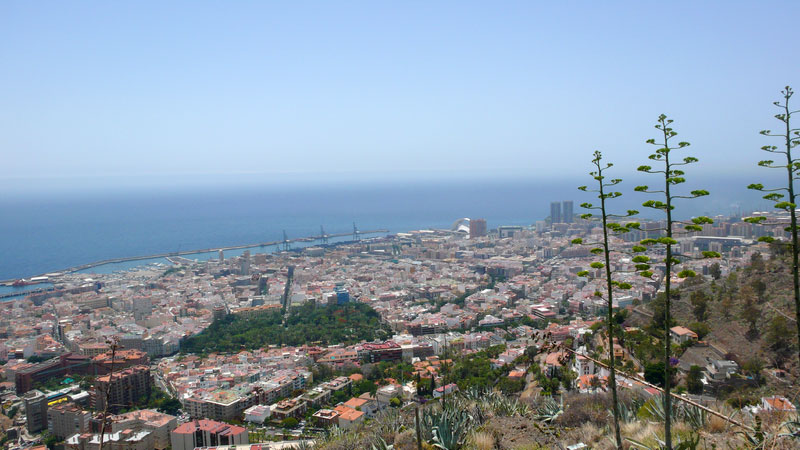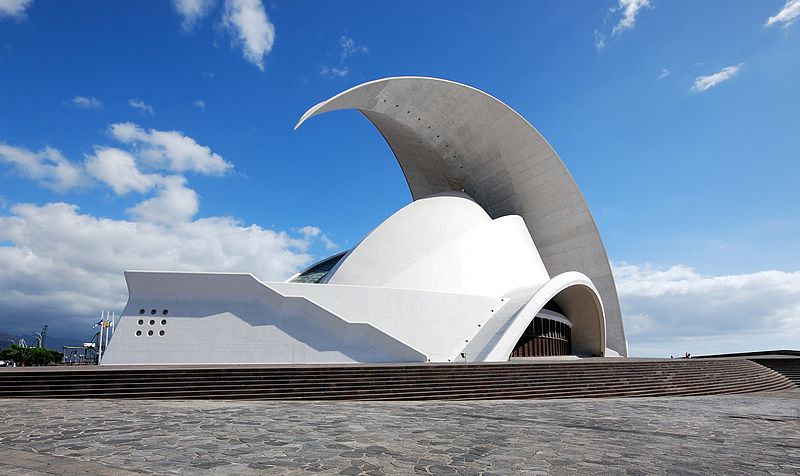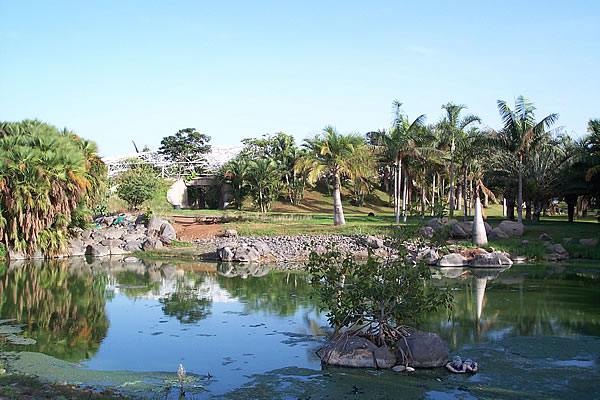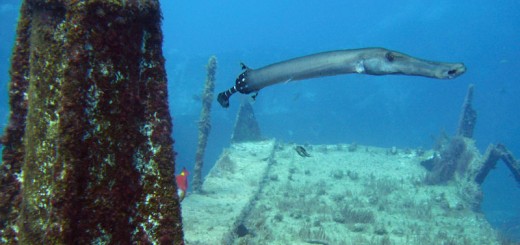
Santa Cruz de Tenerife – Panoramic view of city. Photo by Mataparda
Santa Cruz de Tenerife is the capital and largest city of Tenerife. It’s also the capital city of the Canary Islands, together with Las Palmas. It is situated at the eastern tip of the island of Tenerife, the largest of the Canary Island chain. The municipal borough covers an area of 150.56 square kilometres and it is divided into two differentiated areas: the Anaga Massif and the southern ramp formed by the lava flows that run down from the Acentejo peak to the coast. The maximum altitude in the borough is 750 metres above sea level. Over half the municipal perimeter is shoreline. Population is 223,347 (2005).
Get in
By Plane
There are two different airports in Tenerife. The Tenerife South Reina Sofia International Airport (IATA: TFS) (ICAO: GCTS) is located about 60km away from Santa Cruz, in the south of Tenerife. It’s open the 24 hours of the day with almost 9 million passengers every year. The other airport Tenerife North Los Rodeos International Airport (IATA: TFN) (ICAO: GCXO) closest to the capital, was limited only to island and nationals flights, but the recent opening of the new airport terminal and the entrance of international flights has allowed to improve the connections of the city with the rest of the country and the foreigner.
* Taxi fares from Tenerife North International Airport to Santa Cruz is 15€.
From Tenerife South International Airport to Santa Cruz is 60€.
* Bus lines 102, 108, and 109 go from Tenerife North Airport to Santa Cruz. Line 341 connects Tenerife South Airport with Santa Cruz. One line connects both airports (Line 340).
By boat
The Port of Santa Cruz de Tenerife has become one of the main ports of the country in transit of passengers. You can arrive the city with a Ferry that connects Santa Cruz de Tenerife with Cadiz, in the Mainland, but the trip takes two days. The company that operates this route is Acciona Transmediterranea. You can also take a ship to travel between the islands. The main company is Fred Olsen.

Plaza de España. Photo by Koppchen
Get around
By bus. Fairly cheap (especially if you have a Bono card from bus station and some tobacconists) and fairly regular. Driving is very fast or very slow with little inbetween. Streets can be very narrow. Parking is a problem in the centre.
See
The beaches are less crowded than in the south. The largest is Las Terasitas is made of imported yellow sand and a short 20 minute bus ride (number 910).
The quieter Las Gaviotas is the next bay over and features black sand and plenty of nudists. The infrequent bus 254 there gives impressive views of Las Terasitas.
Macizo de Anaga is a mountain range in the northeaster part of the island of Tenerife in the Canary Islands. The highest point is 1,024 m (Cruz de Taborno). It extends to the Punta de Anaga in the northeast up to Cruz del Carmen in the southwest. Anaga features the mountain points of Bichuelo, Anambro, Chinobre, Pico Limante, Cruz de Taborno and Cruz del Carmen. The mountains were formed from a volcanic eruption about 7 to 9 million years ago making it the oldest parts of the island.
In transportation there are no roads encircling the northeastern part of the island but runs through San Andrés and northwest because these cliffs are treacherous for transportation.
The relative altitude and the peculiar situation being at the passage of the tradewinds converting into a specially humid zone, which favored its existende of special diversity for the natural habitats, which features the laurisilva trees. Faunas also features on the island including Ceropegia dichotoma, Ceropegia fusca, Echium virescens and more.
The natural park was first founded in 1987, it later classified to this day as Parque Rural de Anaga in 1994 by the Law of the Natural Spaces of the Canary Islands. (Espacios Naturales de Canarias).

Playa de Las Teresitas. Photo by Sergio Martín González
The Palmetum of Santa Cruz de Tenerife is a botanical garden of 120.000 m2 located in Santa Cruz de Tenerife, capital city of the Western Canary Islands, specialized in palms (Arecaceae)and divided in biogeographical sections. The project was started in 1996 with funding from the European Union and the city of Santa Cruz. The building site was a former landfill of urban garbage bordering the sea. The hill was landscaped under the direction of the agronomist Manuel Caballero Ruano, the biologist Carlo Morici and the garden designer Carlos Simón. The park includes a large system of waterfalls, streams and ponds, an ethnographical museum dedicated to palms, with offices and labs and a shadehouse called the octagon. The project was paralysed for lack of funding in the 2000 and never opened to the public. Above 300 palm species still constitute a reference palm collection with many uncommon species. 72 of the represented taxa are included in the IUCN red list. The collection focuses on palms from islands and the biogeographical section dedicated to the Caribbean is the largest, spreading over an area of 50.000 m2. The collection of the Caribbean palm genera Thrinax, Coccothrinax and Hemithrinax are among the most complete in the world.
Other attractions
* Calle de la Noria
* Museo de la Naturaleza y el Hombre
* Parque Marítimo César Manrique
* Playa de Las Teresitas
* Auditorio de Tenerife
* Teatro Guimerá

Auditorio de Tenerife, icon of architecture in Canary Islands. Photo by Enrique Castrillo Núñez
Parks and Squares
* Parque García Sanabria
* Plaza de 25 de julio (de los Patos)
* Plaza de España
* Plaza de la Candelaria
* Plaza del Príncipe
* Plaza de Weyler

Palmetum of Santa Cruz de Tenerife. Photo by Enrique Castrillo Núñez
Do
A number of museums. A good history museum five minutes walk from the bus station, where the No. 14 bus stops. An art gallery in town and a small planetarium\science centre on the way to La Laguna (bus 14 passes it). A Bono bus card not only entitles you to cheap travel on TITSA buses but cut price museum entrance. Large Sunday market near the bus station.
Buy
There are two El Corte Ingles department stores selling pretty much everything, as well as various shopping complexes on the outskirts. The main market is well worth a visit, although it is not aimed at the tourists – great fruit, veg, flowers, etc. There is a flea market on a Sunday near the bus station, if you’re short of fleas. Some electrical tourist tat near the main square, which are probably best avoided.
If you’re on holiday though, there’s more to life than shopping. Why not stroll around the beautiful park up by the Rambla instead?
Eat
Canaries food, Spanish food and inevitably, fast food. Most places are good value, but one or two tourist traps near the port. Plenty of good fish, although a dictionary may be helpful.
Drink
Whatever you want. Only a few bars, with a few local people in them.

Museo de la Naturaleza y el Hombre. Photo by Koppchen
Nightlife
Santa Cruz is characterized for its nightlife consisting of discotheques and pubs in the Marina park named after César Manrique, Avenida 3 de mayo and Residencial Anaga, as well as pubs in La Noria street and surroundings, as well a nearby La Laguna. The city is also renowned for its massive, popular and at the same time sophisticated carnival, one of the biggest in the World, declared of International Tourist Interest after general Franco’s death. It takes the city by storm in February or March every year.
Sleep
There are a few reasonable hotels in the city, the best placed is the Hotel Principe Paz. However, parking can be a nightmare, so it’s best to use one of the underground car parks at around 12 euros a day. Santa Cruz doesn’t feel overly touristy (it doesn’t really cater for them), so can be a pleasant change from the hot spots in the south.



